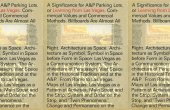Visions of Postcapitalist Design: An Incomplete Survey
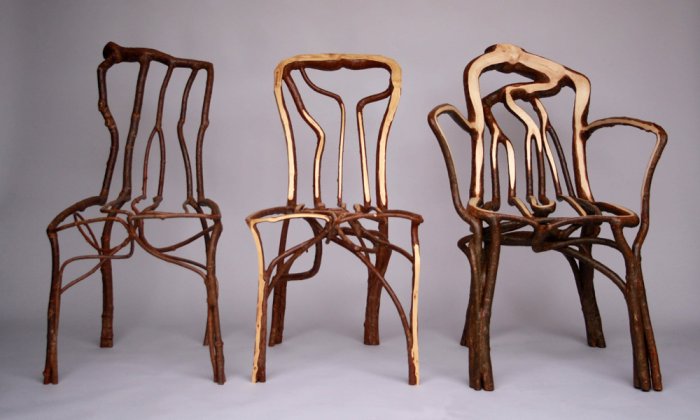
When you realize that capitalism, once, did not exist — either as an economy or a value system — a more shocking thought arises: it might not last forever.
—Paul Mason, PostCapitalism
The designed things, experiences, and symbols that we use to perceive, understand, and perform our everyday lives are much more than just props. They directly shape how we live. So what if design, as a discipline and an interconnected set of professional practices, set about to intentionally and collectively create alternative ways of being in this world? What if design were integrated in the making of a more just, equitable, postcapitalist world? What if design and designers worked on something else?
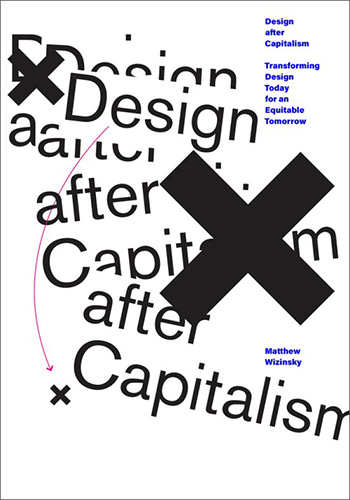
Across history, there have been design movements, practices, and individual designers that have confronted precisely these questions. Some, such as the British Arts and Crafts movement of the 19th century, have been directly anticapitalist, antagonizing the capitalist system; some, such as Enzo Mari, whose 1974 manual “Autoprogettazione” offered easy-to-construct models of household furniture from ready-made cuts of lumber and empowered people to become their own makers, have been noncapitalist, operating outside of the reach of capitalist modes of production. Meanwhile there are also emerging case studies of design practices that offer varying perspectives on what postcapitalist design could be. They illuminate hybrid forms of social organization among designers, producers, and users — in many cases, transforming “users” into active producers and/or designers themselves. Taken together, they offer potent and vigorous views of a diverse but coherent new discipline of postcapitalist design, building new ways of knowing, doing, and being from capitalist ruin. Although limited, I hope this brief survey of case studies provides perspectives and inspiration on the many ways designing can be done beyond capitalist structures and logics — even within capitalist societies.
Postindustrial Design: New Models of Material Production
Almost 50 years after Enzo Mari gave instructions for building your own furniture, the British design and agriculture team Alice Munro and Gavin Munro are demonstrating that we can also grow furniture. Their organization Full Grown UK is researching, testing, prototyping, and putting into practice agricultural design methods to shape trees directly into furniture, “like an organic 3D printing that uses air, soil and sunshine as its source materials.” Although growing a chair may take seven to nine years, the end product requires no assembly, adhesives, hardware, or major machine processes. No global supply chains of materials or associated energy consumption and pollution are involved; all materials are inherently local to their production.
No global supply chains of materials or associated energy consumption and pollution are involved; all materials are inherently local to their production.
This novel approach remakes the design process by applying agricultural knowledge, some of it quite ancient. In designing chairs, end tables, lamp shades, and other domestic furnishings to be grown from various species of trees, Full Grown UK uses the ancient art of coppicing as one of its design methods. Coppicing is a practice of cutting down trees to encourage regrowth. Full Grown UK designers have discovered that certain species regrow new branches in patterns matching the Fibonacci sequence. Based on this knowledge, furniture can be designed specifically to incorporate natural patterns into structural components of the finished pieces. This rethinking of the means of production has the added benefit of enormously decreasing the environmental impact of producing home goods. Although labor and land are required, new models of collective ownership and production are currently being tested, including a crowdfunding platform to support future harvests of furniture.
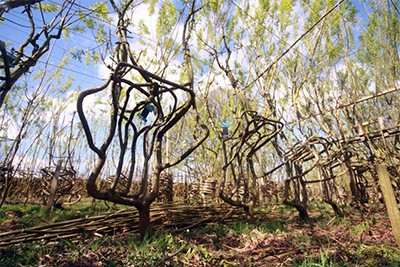
The Detroit studio Thing Thing creates new processes for transforming discarded industrial and postconsumer materials into household goods. Established in 2012, the studio engineers and fabricates its own versions of industrial manufacturing machines “to experiment with materials typically unavailable to designers.” The team makes and modifies “plastic extruders, injection molders, rotational molding, compression molds, and more — developing an expertise and authorship in the entire making process.” They create clocks, mirrors, lamps, vessels, and various furniture pieces in a process that involves transforming postconsumer, hand-recycled, high-density polyethylene plastic into objects that are some combination of sittable and sculptural. Their “Future Foam” project transforms scrap foam from the production of transportation interiors into benches. “Pan Fried Stools” are produced from plastic waste found all over Detroit — automotive waste, product rejects, recycling centers, and even dumpster finds. These repurposed materials are melted in a frying pan and then hardwood legs are attached. The team’s deceptively simple open-source “recipe” for the stool belies their material expertise yet espouses an ethos of experimentally crafted DIY goods: “Bake plastic at 380 for 90 min or until gooey. Remove pan and insert legs. Polish all surfaces and serve.” An accompanying video tutorial shows you how to make your own stool.
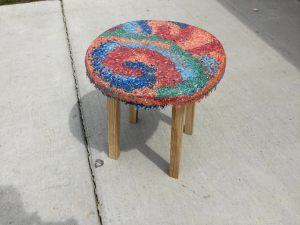
The fashion designer Suzanne Lee’s venture Biocouture is just one example of a rapidly expanding network of laboratories and studios exploring the use of biotextiles for textile manufacturing. In the Biocouture laboratory, bacterial cellulose is grown in a solution of sweetened tea, and during the fermentation process these cells can be modified to create textiles. Sample products from this process include the “bio-biker jacket,” a biotextile send-up of the classic leather biker jacket. “There is a burgeoning global movement of makers and innovators who want to ‘hack’ materials in the same way we’ve seen open source software and hardware,” writes Lee. “Biocouture will provide recipes, methods, documentation and educational tools to enable widespread use and knowledge sharing globally. The big idea is to precipitate the development of many different products according to local innovation and need.”
The potential for organically produced materials that can be locally sourced, grown, and harvested indicates potential for a radical break from the ecologically disastrous linear model of textile and garment production within globalized supply chains.
Taken together, these postindustrial models of production demonstrate there are many different approaches that break with the take-make-use-dispose model initiated by industrial models of production. Although the latter model may sometimes seem inescapable for those of us living in the overdeveloped, overindustrialized world, it is in fact only the tip of the iceberg when it comes to material production.
Autoindustrial Design: New Models of Production and Labor
In the 1940s, the Hungarian American mathematician and engineer John von Neumann was working on the theory for a “universal constructor.” This idea was for a machine that could produce other machines — including machines that, like itself, were machine-producing. These machines would be designed to pass information on from one generation to the next so that they could evolve in complexity, as in the evolution of biological organisms. What this idea holds at its core is the possibility of fully automated production — machines making the machines to make anything else people might need, creating productive abundance on their own.
One of the direct inheritors of this theory is the British engineer and mathematician Adrian Bowyer. In 2005, Bowyer set out on an ambitious project that now includes hundreds of collaborators from around the world. The RepRap project intends to produce a pure self-replicating device. Its name short for “replicating rapid prototype,” RepRap is an attempt to prove that “rapid prototyping and direct writing technologies are sufficiently versatile to allow them to be used to make a von Neumann universal constructor.” The practical implications for this would be that people all over the globe could set up their own self-sustaining nanomanufacturing systems to produce many of the objects used in everyday life. By 2008, RepRap 1.0 (nicknamed “Darwin”) made more than half of the parts for a new version of itself. The project continues in an effort to achieve the broader vision of a truly distributed, democratic, peer-to-peer model of material production.
The practical implications for RepRap would be that people all over the globe could set up their own self-sustaining nanomanufacturing systems to produce many of the objects used in everyday life.
RepRap is an open-source hardware project: The designs are made publicly available so that anyone can make their own device, including modifying and distributing new hardware based on that design. The open-source hardware concept encourages peer-to-peer collaboration so that the development of technology can take place in socially coordinated rather than corporate-controlled ways, with many people sharing knowledge in the process of exchange. Many of the challenges for scaling up this vision are, of course, posed by the commercialization of 3D printing. For many of the early enthusiasts, the vision of an autoindustrial, postscarcity world was their motivation, not narrow commercial success. This early foray into digital and autoindustrial production has generated a variety of interrelated projects that aim to create a robust ecosystem of technologies and materials necessary to realize this vision.
The research-and-development company Filabot is creating “cutting edge miniaturization of industrial polymer processes” in order to recycle plastics into filament to be used by 3D printers. The Filabot grinds up household plastic items — DVDs, sunglasses, water bottles, milk jugs, and so on — and melts them into pellets that can be fused into filament. If the process can be made entirely efficient, this would create the model for a closed loop of resources between the ongoing recycling of materials and the autoindustrial production by self-replicating machines. Filabot lists as one of its values: “To turn a throwaway society into a society that reclaims and creates. With a large focus on education, we strive to learn, teach, and share information so that everyone can make a positive impact.”
Meanwhile, The Protoprint Project is attempting to transform “informal recycling” into a systematic and circular model for recycling plastic into new forms, including 3D filament and injection-molded products. Based in Pune, India, the project collaborates with urban waste pickers and industrial partners to create an ecosystem of sustainable development and economic equity. Started in 2012, the Protoprint Project had by 2020 embarked on the construction of 50 plastic-processing facilities in collaboration with the government of Pune.
The Dutch designer Chloé Rutzerveld is a self-proclaimed “food designer and food futurist.” Her work confronts challenges in food production and consumption with designed interventions for rethinking the social, ecological, economic, and health of food and eating. Trained as an industrial designer, she brings methods from designing for small-batch production — in particular the use of 3D printing — to the making, modifying, and processing of new food types. What her experimentation and various publicly engaged collaborations propose is to remake our common understandings of food by imagining new ingredients, structures, habits of making and eating, and, of course, new ways of “cooking” that use digital fabrication techniques.
Rutzerveld hosts “future food dinners,” in which she engages a direct and participatory model for developing her ideas while bridging research, production, and consumption. The collaborative nature of these events encourages lively discussion among participants, particularly seeking the limits of adoption for some of the more radical ideas. Breaking down barriers to experimentation with one of the most culturally defined categories of everyday life — food — is facilitated through collaboration, cooperation, education, and self-production.
These projects and many other global efforts like them begin to frame a vision for fabrication and production that fundamentally debunks most economic thinking on material scarcity. The American designer and theorist Adam Greenfield clarifies how the economy of this vision contrasts with other types of economy: “A command economy seeks to plan ahead of time what things will be needed, and how many of each will be required; a market economy uses prices as signals to determine what should be made and when. An economy based on personal fabrication would undermine the assumptions common to both, by allowing end consumers to fulfill emergent demand more or less directly.” The challenge for cultivating an emergent demand economy rests in combining the right social, political, and organizational configurations so that they can “effectively resist capture by existing logics of accumulation and exploitation, and bind them into processes that are generative of lasting and significant shared value.” These are the challenges of building an equitable and egalitarian postcapitalist society.
These disparate examples of autoindustrial production indicate alternative models of production, particularly pertaining to the use of technology. In these socially embedded approaches, automated methods of production don’t erase human labor. Rather, new forms of decentralized, localized, and user-generated modes of production emerge — and more can be imagined — that put control of technical, economic, and labor concerns into the hands of individuals and communities. This shift has the subsequent effect of creating new subjectivities as users become more directly engaged in designing and making — rather than only consuming — the material culture of their lives.
Matthew Wizinsky is Associate Professor & Graduate Program Director in the Ullman School of Design at the University of Cincinnati and Associate Editor for the design journal Visible Language. He is the author of “Design After Capitalism,” from which this article is adapted.



